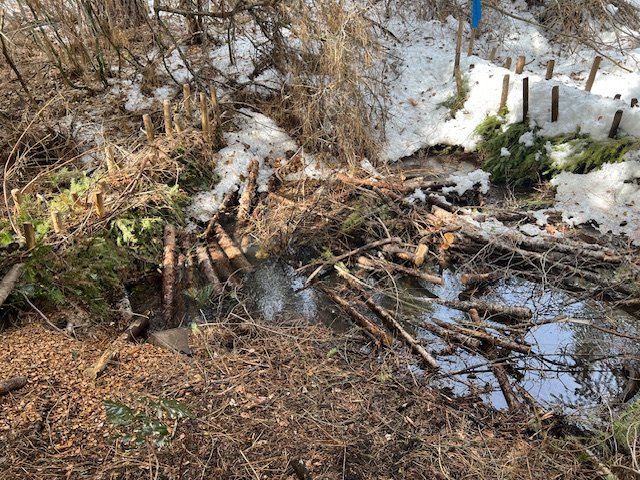
Teanaway Valley Meadow
The Project and Background
Washington Department of Fish and Wildlife (WDFW) and Mid-Columbia Fisheries Enhancement Group (MCF) are working together to restore the upper meadow in the Teanaway Valley Unit. There are two water bodies that flow through the meadow: John's Creek and an ephemeral channel that flows during the spring snow melt. These stream channels have been simplified from their historic natural condition due to past logging and agricultural land use.
In order to restore stream function and increase ground water storage in the meadow, MCF will install a series of strategically placed beaver-dam analogs (BDAs), post-assisted log structures (PALS), small diameter logs, and brush bundles into the two channels. These structures are designed to slow water velocity and encourage overland flows which will result in shallower, more complex channels. This added complexity will increase the amount of time water is retained in the meadow and improve habitat conditions for fish once the fish-barrier culverts are removed during the second phase of the project.
In July 2023, MCF worked directly with WDFW to thin trees from the forest found on the eastern boundary of the meadow. These trees were all less than 8" in diameter. These trees were moved adjacent to the stream and used to create BDAs and PALS. The construction process utilized a hydraulic post-pounder to drive wood into the bed and banks of the two channels. Once the wood posts were installed, branches are woven through to emulate a natural beaver dam. The project work was finished in October with adaptive management and montitoring occuring in 2024 and 2025.
Beaver Dam Analogs (BDAs) and Post-Assisted Log Structures (PALS) are simple, cost-effective, non-intrusive approaches to stream restoration. These man-made structures are built to mimic the work of a beaver. By driving wooden posts into the channel and weaving native tree branches and logs between them, these structures influence the structural and functional processes of a stream. When installed properly, these wood structures slow the flow of water, allowing sediment from upstream to settle above the structure.
For this project, the design and installation of BDAs and PALS was implemented as a low-cost method to reduce the velocity of snowmelt flows and to spread and store water in the meadow for longer periods of time..
Small project, big progress and setting a path for better future
This project was completed in October 2023. Using a small project to understand meadow restoration, meadow encroachment, beaver dam analogs, and water storage allows to take project success to larger-scale restoration projects. Contact Mike Bosko, mike@midcolumbiafisheries.org, for more information and getting involved!




